Wakulla Springs State Park
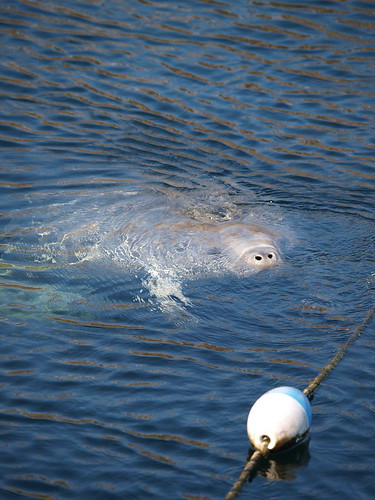 |
| "Breeching" Olympus E-3 with 50-200mm 1/320s, f/3.5, ISO 100, 130mmm |
My daughter and I drove down to the park primarily to check out the manatees that live in the springs. Wakulla is one of the largest and deepest freshwater springs in the world and an exit point for the Floridan Aquifer. Because it is fed by underground water, the spring's temperature stays a fairly constant 70° F (21° C) all year round, allowing the manatees to live in the springs all year round as well. That constant warmth helps the manatee (and the gator) population out in the winter, when air temperatures plunge down to the twenties and teens at night, especially during this current winter season.
Entry into the park costs $6/car (up to eight people), or $2/person. This is a very reasonable rate, considering the size of the park and the wildlife it's meant to provide habitat for.
Once in the park, we discovered that tours on the water were an additional $9/person. This is for a roughly circular tour on the water, and lasts for about one hour.
You don't have to take the tour. The main part of the park is organized as a beach area with a clubhouse. If you go up the diving tower at one end of the beach, you have an opportunity to see manatees out in the water swimming fairly close to the tower. The photo "Breeching", for example, was taken from the first level of the tower. But if you want a richer experience of Wakulla's wildlife, then a boat tour is de rigueur.
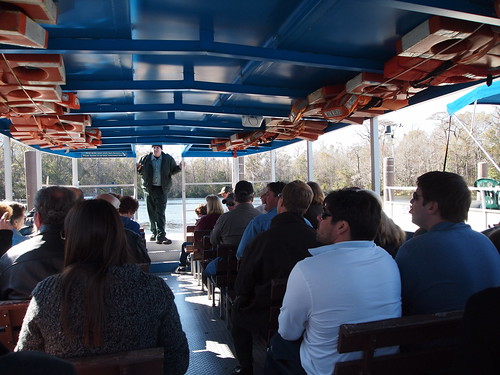 |
| "Head Count" Olympus E-P2 with M.Zuiko 14-42mm 1/200s, f/5, ISO 200, 14mm |
Boats hold about 40 people, and our tour was typical of that number. The two of us sat in the very back on the port (left) side. The boats start out in such a way that the port side is always facing the interior of the springs, while the starboard side is always facing shoreward. It's the port side that saw most of the wildlife on the water today, and I would expect it to be that way all year round.
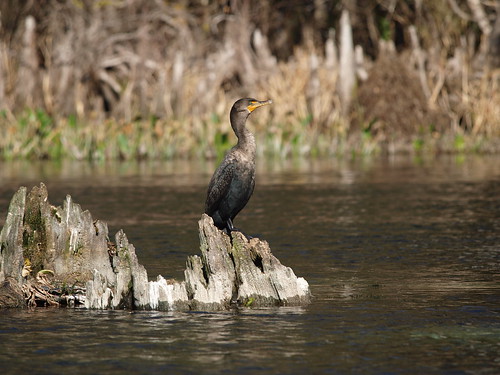 |
| "Sentinel" Olympus E-3 with Zuiko Digital 50-200mm 1/1250s, f/4.5, ISO 200, 200mm, -0.3 EV |
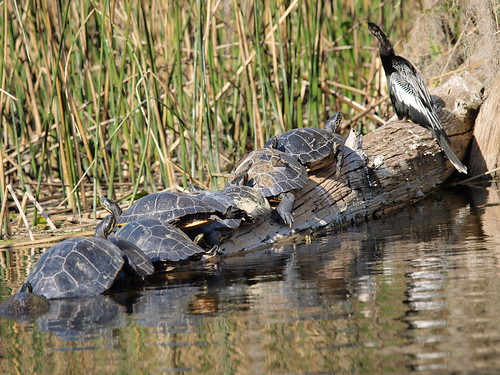 |
| "Pile-up on the off ramp" Olympus E-3 with Zuiko Digital 50-200mm 1/800s, f/4.5, ISO 200, 158mm, -0.3 EV |
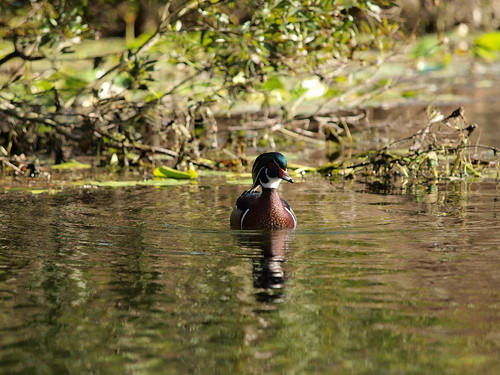 |
| "Wood Duck" Olympus E-3 with Zuiko Digital 50-200mm 1/500s, f/4, 200mm, -0.3 EV |
I took over 200 photographs with the E-3 and the ZD 50-200mm. In spite of all that activity I had very few keepers, fewer than I would have liked. The problem was a combination of focus and motion blur. I attribute my lower than expected keeper rate to my lack of experience with this particular combination of body and lens under these particular circumstances. The boat was constantly in motion, and knowing that I should have shot ISO 400 at f/5.6 and allowed the shutter speed to climb up to around 1/2000 second. There were some particularly exquisite blue heron photos that are lost because of blur and/or focus lock. Like I said, I need more practice.
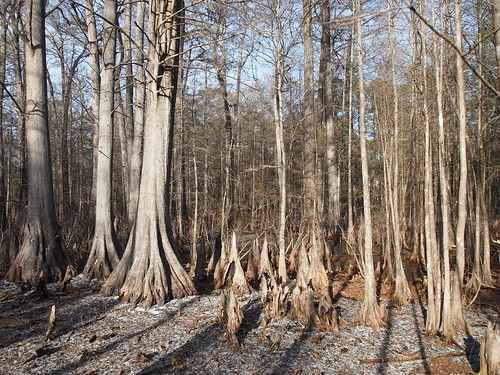 |
| "Controlled Burn" Olympus E-P2 with M.Zuiko 14-42mm 1/320s, f/5, ISO 200, 14mm |
On the way out of the park we came across a controlled burn on the road leading out of the park. Controlled burns are important, as then help clear away lower brush and unlock natural nutrients back into the soil. Controlled burns also keep the brush cleared so that when it does burn the fire is of a reasonable intensity. The cypress have evolved (as have trees in general) to survive low-intensity brush fires. Unfortunately it's in forests where we keep fires to a minimum and consequently allow ground brush to build up, that when the big fires finally do take hold that the older mature trees suffer damage, or are themselves fully consumed.
I enjoyed our little trip down to Wakulla Springs, and I hope to have more opportunities to go back. In the mean time I need to practice my wildlife and birding photography techniques so my keeper ratio picks up.

Comments
Post a Comment
All comments are checked. Comment SPAM will be blocked and deleted.